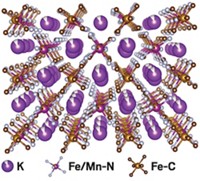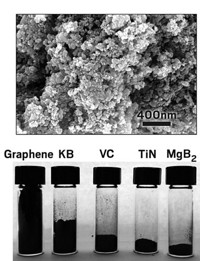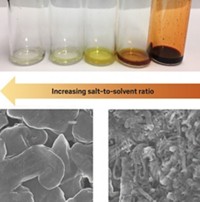Advertisement
Grab your lab coat. Let's get started
Welcome!
Welcome!
Create an account below to get 6 C&EN articles per month, receive newsletters and more - all free.
It seems this is your first time logging in online. Please enter the following information to continue.
As an ACS member you automatically get access to this site. All we need is few more details to create your reading experience.
Not you? Sign in with a different account.
Not you? Sign in with a different account.
ERROR 1
ERROR 1
ERROR 2
ERROR 2
ERROR 2
ERROR 2
ERROR 2
Password and Confirm password must match.
If you have an ACS member number, please enter it here so we can link this account to your membership. (optional)
ERROR 2
ACS values your privacy. By submitting your information, you are gaining access to C&EN and subscribing to our weekly newsletter. We use the information you provide to make your reading experience better, and we will never sell your data to third party members.
Energy Storage
Poisonous mushroom compound could help flow batteries
The vanadium-binding compound could improve the stability of the devices
by Katherine Bourzac
April 2, 2019

As utilities adopt more renewables, the need for large-scale energy storage on electrical grid is growing. Solar, wind, and other renewables produce electricity intermittently, so storage is key to making those sources practical. One way to meet this need is with flow batteries, which store energy in large tanks of chemicals. But for this technology to compete with conventional lithium ion batteries, the storage capacity of flow batteries must be increased, and their stability improved.
A group of chemists working to improve the flow battery has found inspiration in an unusual place: the forest floor. On Sunday at the American Chemical Society national meeting in Orlando, Patrick Cappillino, a chemist at the University of Massachusetts Dartmouth, described how his group has adapted a compound made by mushrooms to improve the stability of flow batteries.
In a conventional battery, lithium and other ions move back and forth between solid electrodes. Redox flow batteries store energy in the oxidation state of a charge carrier, commonly vanadium, that stays put. Instead, protons and electrons or hydroxide ions travel back and forth across a membrane separating tanks of solvents and the charge carrier.
Vanadium is the charge carrier of choice because it can be chemically toggled between several oxidation states, Cappillino said. To prevent the ions from moving across the membrane, V4+ is held in place by a chemical carrier. A good vanadium-binding compound has to do many things. It should have high affinity for the metal ion. And it should be very stable—these batteries need to be charged thousands of times and last for years. These compounds also need to be highly soluble in solvents that can withstand high voltages without decomposing. The higher the voltage, the more energy the flow battery can store. Existing flow batteries are limited to about 1 V, and that voltage needs to increase four- or five-fold for the technology to be a contender, Cappillino said. (Lithium ion batteries operate at about 3.8 V.)
Cappillino was surprised to learn from a colleague that mushrooms in the Amanita genus, which includes several poisonous fungi such as toadstools, accumulate relatively large amounts of vanadium in a coordination complex called amavadin. Amavadin has the highest vanadium-binding stability ever measured. Cappillino wondered if he could adapt it to work in a flow battery.

The UMass Dartmouth researchers reported a 100-gram synthesis of an amavadin-inspired compound called VBH2- two years ago (J. Mater. Chem. A 2017, DOI: 10.1039/C7TA00365J). Yang-Shao Horn, a chemist who develops vanadium redox flow batteries at the Massachusetts Institute of Technology, is impressed by the synthesis method and the molecular design of the compound.
During a session in the Division of Physical Chemistry, Cappillino discussed his group’s progress on translating the fungi-inspired compound to flow batteries. VBH2- is highly selective for vanadium, and the compound is stable. But it’s not soluble enough in high-voltage solvents for use in a flow battery. The UMass Dartmouth researchers are working on it by tuning the material’s solubility.





Join the conversation
Contact the reporter
Submit a Letter to the Editor for publication
Engage with us on Twitter